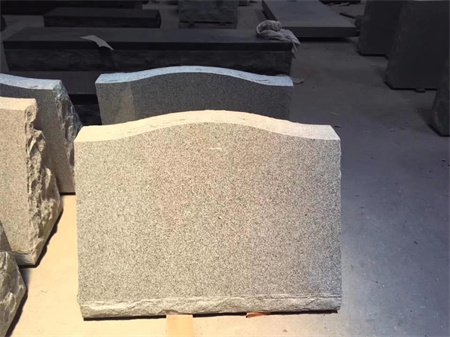How Color Affects the Overall Aesthetic of Granite Memorial Stones

How Color Affects the Overall Aesthetic of Granite Memorial Stones

The colors of granite memorial stones are not just superficial details; they carry emotional weight, influencing how visitors connect with the memorial. Whether the stone is placed in a peaceful cemetery or a private garden, the color sets the tone and complements the surroundings in ways that go beyond mere appearance. Each shade of granite has a story to tell, and understanding how these colors impact the visual appeal of the stone can help in making a choice that resonates deeply with those who visit.
Take, for instance, the rich, deep hues of dark granite. Shades like black, dark gray, and charcoal are often associated with strength, elegance, and solemnity. These colors evoke a sense of reverence and dignity, making them particularly suitable for those who wish to convey a lasting, serious tribute. Black granite, in particular, has a classic and timeless appeal. It’s known for its smooth, reflective surface, which gives the stone a sleek, polished finish. This reflective quality also adds a layer of depth, making the memorial feel more intimate and personal. Visitors may feel as if they are not just looking at a stone, but engaging with the memory of the person it honors.
On the opposite end of the spectrum, lighter shades of granite offer a completely different vibe. Light gray, beige, and even soft pinks are often chosen for their more approachable and serene qualities. These colors exude warmth, gentleness, and peace, creating a calming atmosphere that invites contemplation and remembrance. A soft beige granite memorial, for example, can blend beautifully with natural surroundings like gardens, trees, and rolling hills. It offers a subtle elegance without overwhelming the senses, providing a sense of serenity that many find comforting.
The interplay between granite colors and the memorial’s surroundings is not to be underestimated. Light-colored stones tend to stand out in a softer, more understated way against vibrant landscapes or green spaces. They seem to absorb the natural light, taking on different shades as the day progresses. This adaptability creates a memorial that feels alive and ever-changing, a fitting tribute to a loved one who will forever be a part of nature’s cycles.

The way granite color interacts with engraved text and symbols is another aspect to consider. Darker stones with high contrast engraving can make the text stand out boldly, ensuring that the message is clear and easy to read. On the other hand, lighter stones may require more intricate or deeper engraving to ensure visibility, but they often offer a softer, more subtle approach to the memorial’s message.
Choosing the right color for a granite memorial stone is also influenced by cultural or personal preferences. For some, specific colors may hold symbolic significance, such as the color red representing love and remembrance or green symbolizing growth and renewal. For others, the choice may simply come down to aesthetic preference—how the stone fits with their vision of the memorial or how it complements their family’s legacy.
The color of a granite memorial stone does more than just affect the look of the stone itself; it contributes to the emotional experience of those who visit it. Whether it’s the quiet dignity of a black granite monument, the peaceful charm of a light gray memorial, or the bold energy of a vibrant red stone, each color helps shape the way we remember and honor those who have passed. In the end, it’s about creating a tribute that resonates on a deeply personal level, a memorial that feels as unique and meaningful as the life it commemorates.
